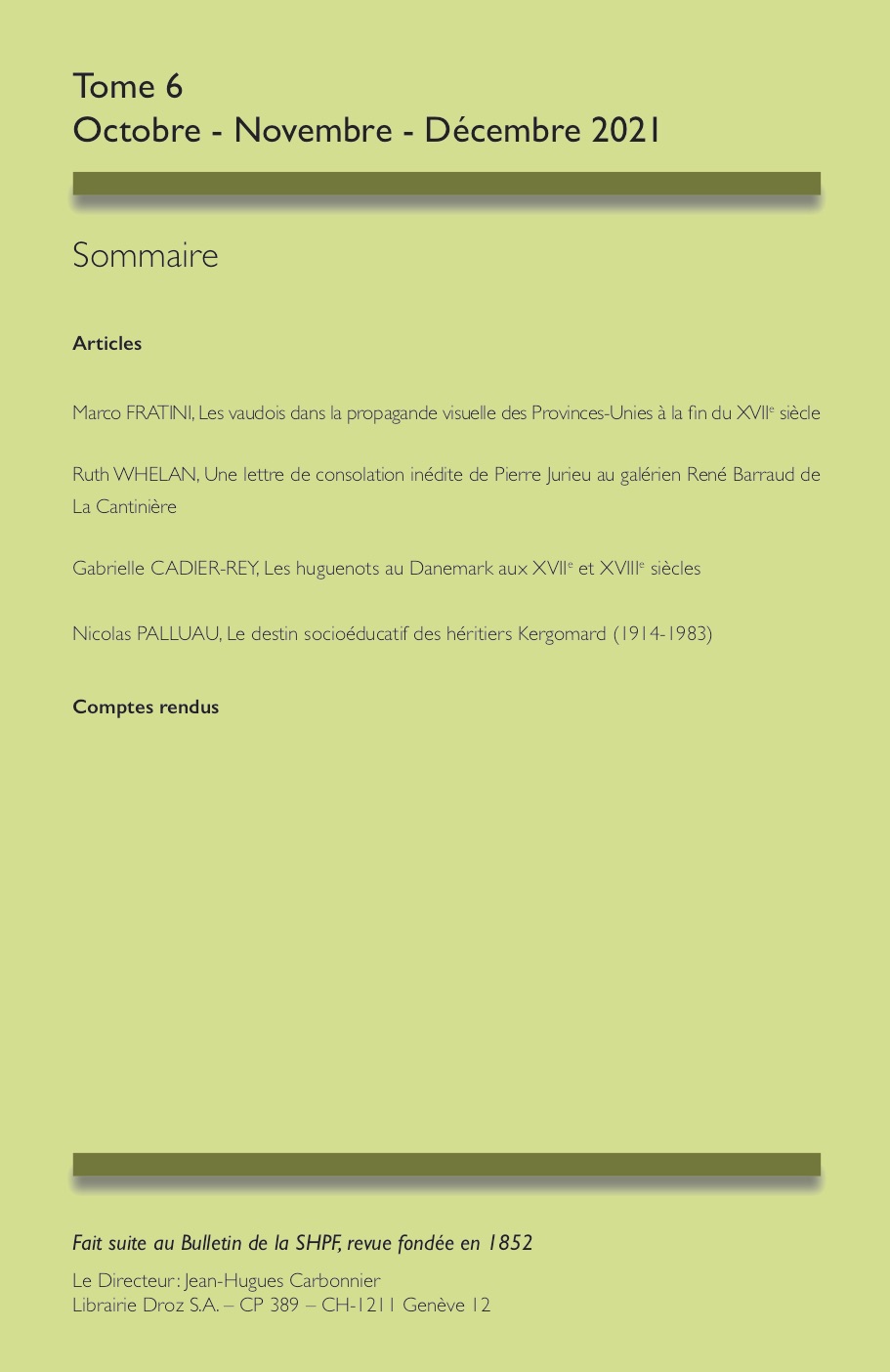Les vaudois dans la propagande visuelle des Provinces-Unies à la fin du XVIIe siècle
Abstract
In the seventeenth century, the survival of the Waldenses in the Alpine valleys of Piedmont was threatened several times and could only continue with the support of the Protestant European nations. The Dutch Republic supported them both in 1655 and after 1686, with diplomatic, financial, and military interventions and extensive propaganda. Here, in the propaganda campaign against the French sovereign, they also made use of the image of the Waldenses, depicted on placards, maps, and medals. With the change in political alliances and the outcome of the war, their image also changed at the end of the century, from “martyrs for the faith” to hardy resisters determined to reconquer their lands, to loyal soldiers of the Duke of Savoy. The portrayal of the Waldenses as a persecuted minority was widely disseminated during the massacres of 1655, known as the “Piedmontese Easter” or the “Bloody Spring”. Through Dutch and English publications, European public opinion was presented with images of the inhabitants of the Alpine valleys of Piedmont being subjected to countless atrocities, with the aim of provoking horror and indignation, but also pity and solidarity in Protestant countries. Thirty years later, with the Revocation of the Edict of Nantes, Louis XIV’s offensive against the Huguenots also dramatically involved the Waldenses who were subjects of the Duke of Savoy. Persecution, imprisonment, and forced exile brought new diplomatic support and propaganda from the Protestant powers, especially England and the Republic of the United Provinces, united by the figure of William III of Orange. At this stage, depictions of the Waldenses in prints and on medals remained sporadic and, when they did appear, they were above all to denounce the persecution they had suffered. This characteristic was compounded by other issues on the political and religious agenda at the time. First of all, they no longer appeared as an isolated reality, but as part of a plural Protestant world, within which, in the controversy against the French king’s policy towards the Reformed, they remained in the background compared to the Huguenots. Secondly, also from a political point of view, their attempts at survival, and sometimes armed resistance, were a constant disturbing element in the dispute over a border territory between the kingdom of France and the duchy of Savoy and, for this reason, aroused further interest in the other European powers. Their military participation in the Franco-Savoy conflict as subjects of the duke shows them, in a medal of 1691, as efficient and faithful soldiers in the service of Victor Amadeus II. Moreover, historical continuity from medieval times also guaranteed the Waldenses the exemplary value of being ancestors to the Reformation, at a time when European Protestantism was searching for deep historical roots to legitimate its antagonism to the Church of Rome. The vindication of their presumed apostolic origin turned them into an ancient witness of an “authentic Christianity” which was still alive and therefore had to be preserved. Finally, the success, albeit tragic, of the Return from exile in 1689 creates an exemplary image of the redemption of God’s people. In its accomplished parable from “martyrdom” to “glory”, they offer, even to the Huguenot exiles in the Netherlands, the confirmation of the possibility of a concrete fulfilment of their prophetic readings of the Apocalypse, with a view to the redemption of all persecuted Protestants, as witnessed by a Dutch medal of 1686-87, whose tortuous circulation also included printed publications. The study of these figurative (albeit rare) witnesses of the Waldenses produced at the end of the seventeenth century allows us to understand their symbolical representation and the multiple meanings they took on, particularly in the Dutch Republic and, thanks to the wide circulation of printed matter, in the eyes of European Protestantism.
How to Cite
More Citation Formats

